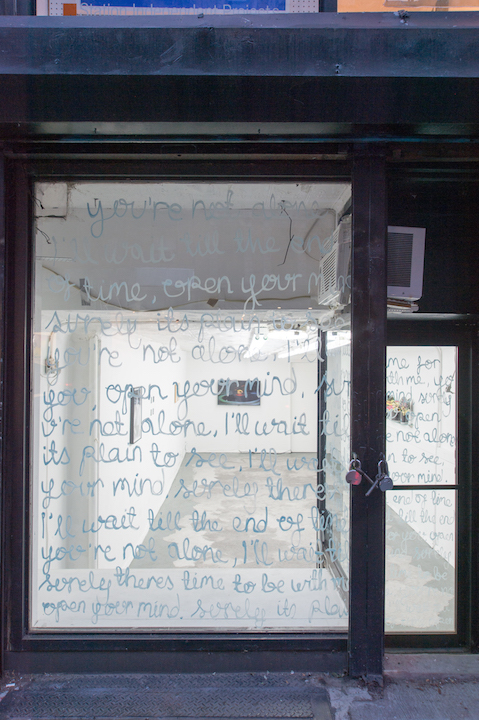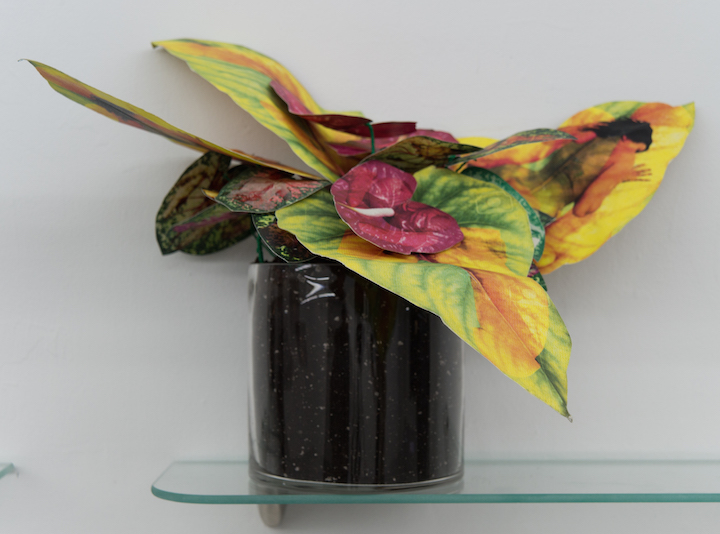To A Body
Julia Heyward & Ericka Beckman, Mary Beth Edelson, Bill Hayden & Heji Shin,
Jibade-Khalil Huffman, Beatrice Loft Schulz, and Kandis Williams
& assorted texts
Curated by Elisa R. Linn & Lennart Wolff
November 11 - December 22, 2017
Opening reception: Saturday, November 11, 6-9pm
138 Eldridge Street, New York, NY 10002
"Morgan Parker and Jibade-Khalil Huffman Reading Poems" Sunday, December 17, 5 - 7pm at STL NYThe exhibition will be followed by a performance and screening by Julia Heyward at the Bronx Museum in February 2018.
PRESS RELEASE:
The curls of a man; the brow that they hide, A living soul inside; the tender skin; And the folds of his suit at his lap, All things that I saw as a child
— A un cuarp, Pier Paolo Pasolini
The poem A un cuarp [To A Body] first appears to be an intimate document of the author's sexual desire. However, originally written in Friulian – a marginal language within the hegemonic territory of Italian linguistic culture, which prior to Pasolini’s engagement had not existed in modern literature – it posses a hidden quality as a linguistic and cultural expression that awaits liberation.
Becoming directly sensual, its expression distinctly and uniquely physiological, the poem and its language are the folds of [a] suit that await unfolding, undoing and exposure. To A Body tends to function like the snapshot of an emerging culture for its ability to capture the expressions of a body during a transitive and therefore limited moment of expression. 1.
To what extent can the body be understood as not only a subject who produces and who, because it produces art, shows us the paradigm of production in general, the power of life, but as a machine into which production and art inscribe themselves?
Departing from Pasolini’s To a Body, the exhibition reflects on the relationship between bodies and language and on the role that art works play both as products and agents in the formation of subjects. Considering the notion of desire, affect and pleasure – as being necessarily entangled with the political – constitutes a starting point for many of the works on view. As desire might be understood as being always a desire for recognition by others, some of the contributions engage with questions of representation and visibility, while addressing its function as an integral part of the ways in which powerful norms and discourses come to be reproduced. Here the need for a subjection to the norms of recognition leads to a fundamental dependency on a discourse that is not chosen, but allows and preserves an ability to act. As this dependency locates us ‘outside of ourselves’, in a ‘broader sociality’ the works in To A Body employ performance, video, photography, text and sculpture in an attempt to interrupt the process of subjectivization: the formation of a one that is not a self but is the relation of a self to an other.
---------------
1. Pasquale Verdicchio, Looters, Photographers, and Thieves: Aspects of Italian Photographic Culture, 2011
Elisa R. Linn is a curator and writer based in Berlin and New York, where she is currently attending the Whitney Independent Study Curatorial Program. Her writing has appeared in publications and magazines including frieze, Spike Art Quarterly, Kaleidoscope and artforum. Lennart Wolff is an architect and curator based in Berlin and a graduate from the Architectural Association London. Together they founded the curatorial project km temporaer. Current and upcoming projects include performances, screenings and exhibitions at galleries, independent spaces and institutions such as Galerie Bernhard (Zurich, 2017), South London Gallery (London, 2018), Neuer Aachener Kunstverein (Aachen, 2015), 83 Pitt Street (NYC, 2016), British School at Rome (Rome, 2018), Bronx Museum (NYC, 2018) as well as the Center for German Architecture (Berlin, 2018).





























